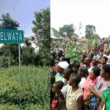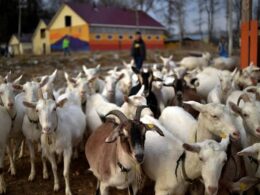South Korea recently recorded its hottest year on record, with the Korea Meteorological Administration reporting an average annual temperature of 14.5°C—two degrees higher than the previous 30-year average.
At least 18 people have lost their lives in one of South Korea’s most severe wildfire outbreaks, with blazes sweeping through multiple regions and leaving a trail of destruction, the country’s acting president confirmed on Wednesday.
The fires, which ignited over the weekend, have scorched vast areas of land, forcing nearly 27,000 residents to flee. As the flames spread, roads were cut off, communication lines failed, and entire neighborhoods were consumed, sending people into a desperate scramble for safety.
Worsening Conditions and Rising Toll
Overnight, the death toll rose sharply as strong winds fanned the flames, engulfing homes and even destroying an ancient temple. A senior safety ministry official confirmed the fatalities, as firefighters battled to contain the wildfires.
According to the interior ministry, the fires have consumed approximately 17,398 hectares (42,991 acres), with Uiseong County suffering the heaviest losses, accounting for nearly 87% of the burned area.
Authorities have escalated the crisis alert to its highest level, taking extraordinary measures such as relocating thousands of inmates from correctional facilities.
“Wildfires burning for a fifth consecutive day are causing destruction on an unprecedented scale,” said Acting President Han Duck-soo during an emergency disaster response meeting.
Han emphasized that the situation had surpassed all previous forecasting models, adding, “The fires are spreading in ways that defy expectations.”
Throughout the night, numerous regions remained in turmoil as fires severed power supplies and communication networks, while blocked roads hindered evacuation efforts.
In Andong, one of the hardest-hit areas, displaced residents found temporary shelter in an elementary school gymnasium. Many had fled with nothing but the clothes on their backs.
“The wind was fierce,” said 79-year-old Kwon So-han, who recounted how he barely escaped his burning home. “The fire descended from the mountain onto my house. You can’t understand the terror unless you’ve lived through it. I could only save myself.”
One of the fires is now threatening Hahoe Folk Village, a UNESCO-listed cultural site renowned for its traditional architecture. Authorities have placed the area under high alert as firefighters scramble to protect it.
More than a thousand emergency personnel have been deployed, but efforts have been hampered by powerful winds reaching speeds of 25 meters per second, grounding helicopters and drones.
“The shifting wind patterns and prolonged dry conditions have exposed the limitations of conventional firefighting tactics,” Han admitted.
South Korean military personnel and American forces stationed in the country have been called in to assist with the containment efforts.
South Korea recently recorded its hottest year on record, with the Korea Meteorological Administration reporting an average annual temperature of 14.5°C—two degrees higher than the previous 30-year average.
Experts believe extreme weather conditions, including prolonged drought and unusually dry air, have significantly contributed to the fires.
This year alone, South Korea has experienced more than twice the number of wildfires compared to the same period last year.
Officials believe the largest fire, in Uiseong County, originated from an accident involving a person tending to a family grave, inadvertently sparking the inferno.
The government has pledged emergency relief and financial aid for those displaced by the disaster. Temporary shelters have been set up to accommodate evacuees, while authorities work to restore essential services in affected areas.
Some residents have taken matters into their own hands, desperately trying to defend their homes.
Apple farmer Cho Jae-oak described how he and his wife spent hours spraying water around their house in an attempt to keep the flames at bay.
“We kept spraying and guarding our home. When the fire roared through the mountain, fireballs rained down,” he said. “Eventually, we had no choice but to leave.”










Join our Channel...